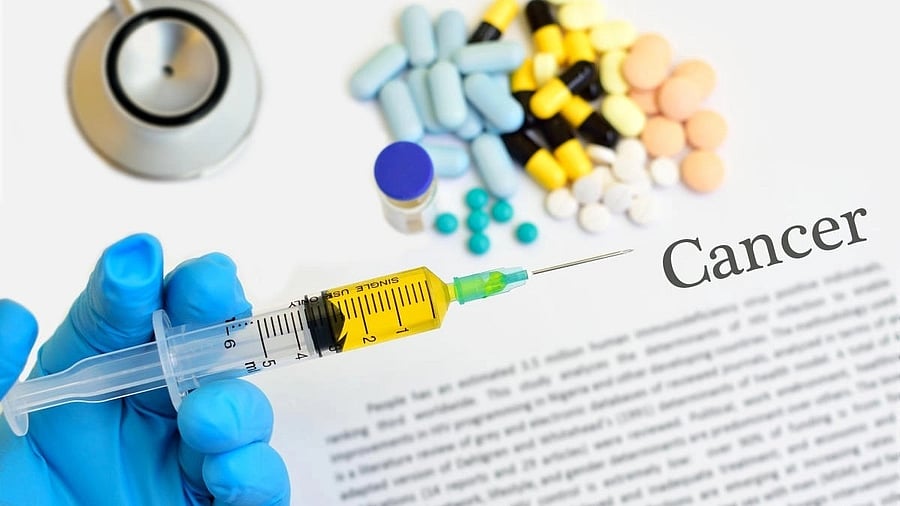
Syringe with drugs for cancer treatment.
Credit: Getty Images
India is grappling with a rising burden of cancer cases, with projections of a continued increase in numbers necessitating focused intervention. According to the Indian Council of Medical Research (ICMR), the country saw an estimated 14.61 lakh new cancer cases in 2022; this figure is expected to rise to 15.7 lakh by 2025. There is a lifetime cancer risk for one in nine people. These figures are considered conservative. Cancer-related mortality went up at an average rate of 0.1-1% in the last few years. Globally, India has the highest growth rates for cancer. A parliamentary panel report recently said, quoting the ICMR, that cancer deaths in the country would rise 20% to 880,000 in the next four years. As in the case of tuberculosis and diabetes, India is becoming the world’s cancer capital.
The rise in cases has been traced to multiple reasons – primarily, the changes in lifestyle and unhealthy dietary habits. Regions with high use of tobacco and alcohol have reported a higher incidence of cancer. The country has a wider spread of diagnostic facilities and more advanced diagnostic techniques than in the past. Breast, lung, oral, and cervical cancers remain significant threats. Late diagnosis has been consistently cited as among the major reasons for the high mortality rate among cancer patients. It is worrying that despite targeted awareness programmes, cancer screening rates remain very low. It is estimated that only less than 5% of the population is covered under the national programme for prevention of cancer and other major ailments. The Committee on Petitions, Rajya Sabha, recommended in a report last week that cancer be declared a notifiable disease, to ensure systematic reporting and collation of reliable data.
Cancer treatment and care facilities have not kept pace with the needs of the rising population. Treatment is costly and most people cannot afford it.
It is estimated that hospitalisation is beyond the reach of about 80% of the population. The HPV vaccine which can prevent cervical cancer is yet to be made a part of the vaccination scheme. The parliamentary committee has called for a nationwide rollout of the vaccine for girls in the 9-14 age group. It also noted that the country has only 2,000 oncologists for the estimated 10 million cancer patients. Greater focus needs to be applied on developing public awareness programmes, in both preventive and curative areas. The government should also work with non-profit and community organisations to formulate and implement efficient mitigation strategies.
